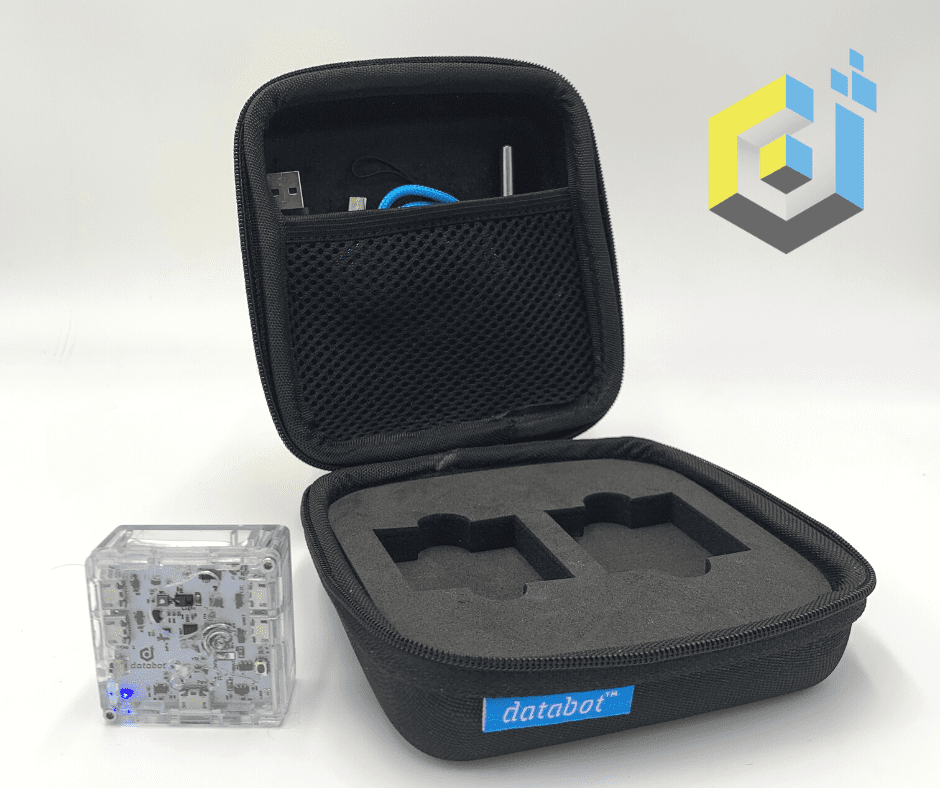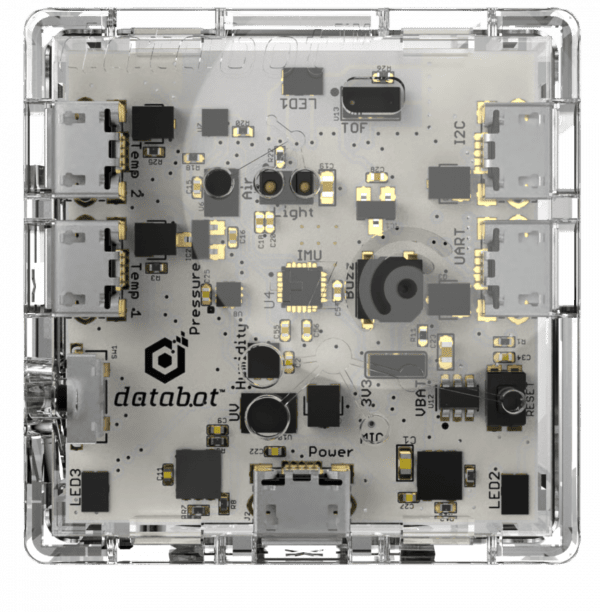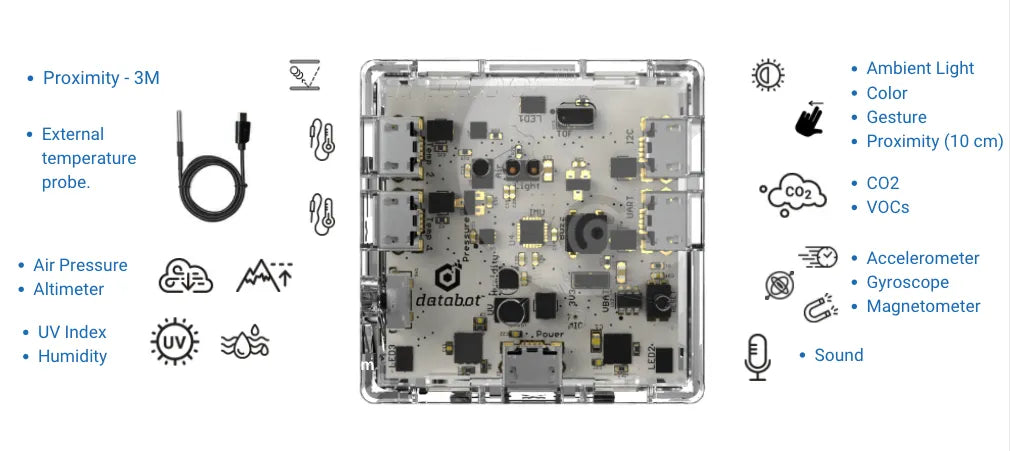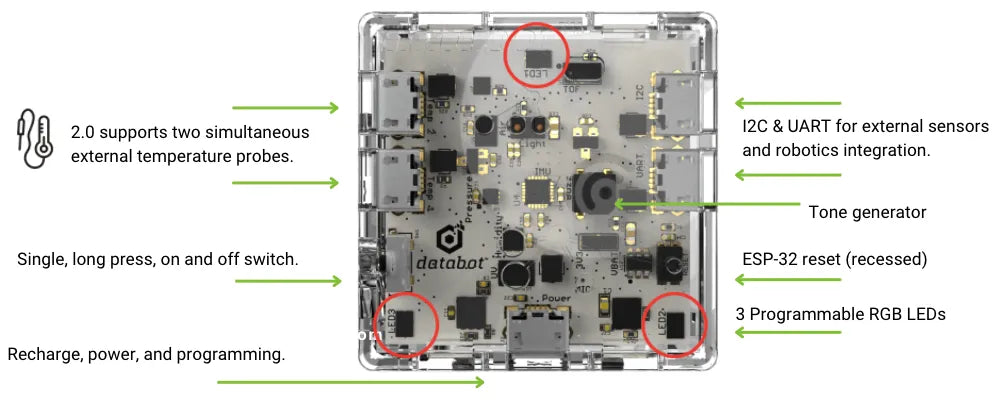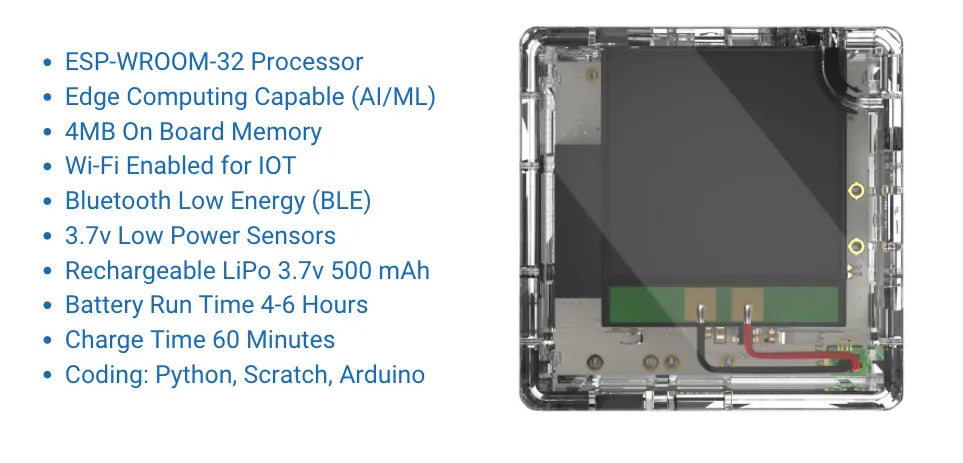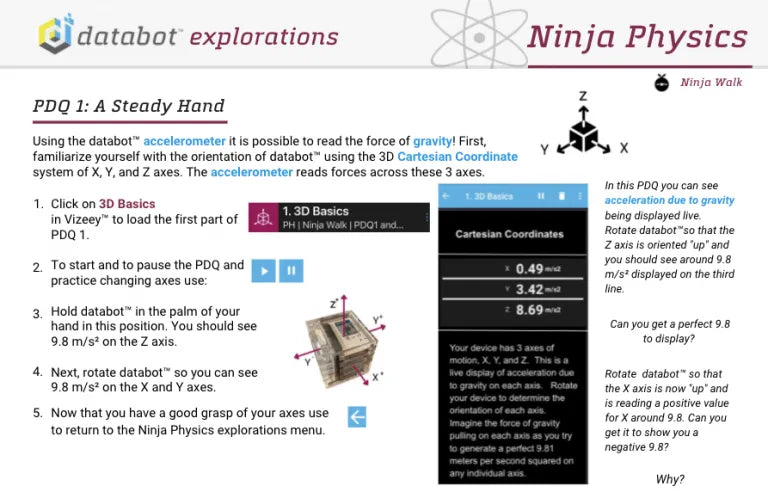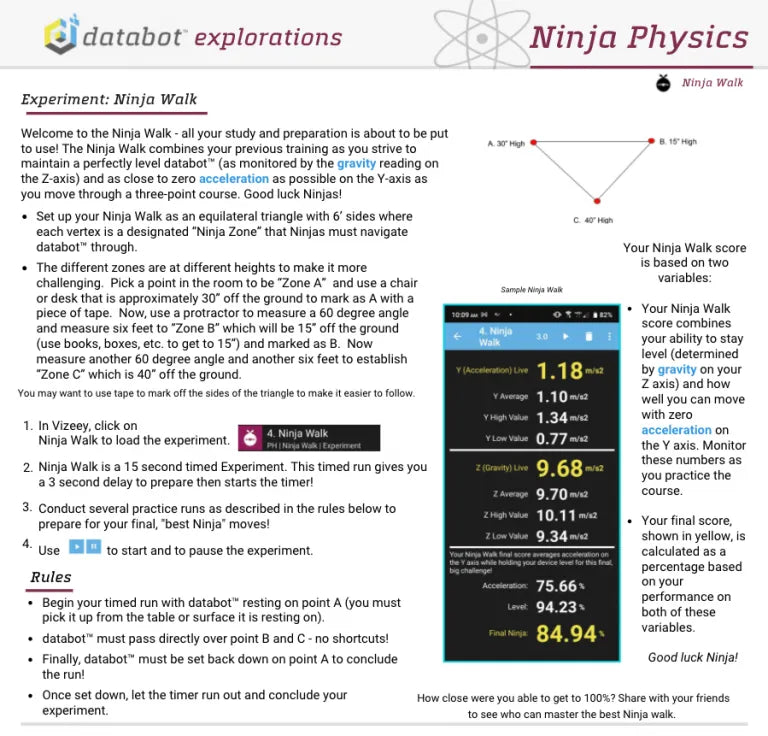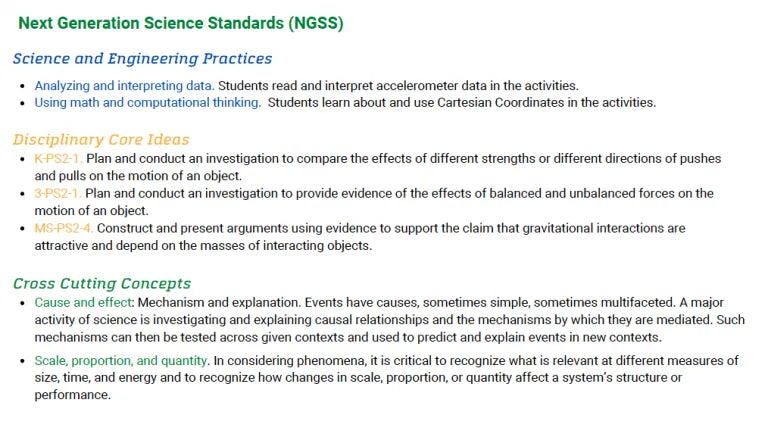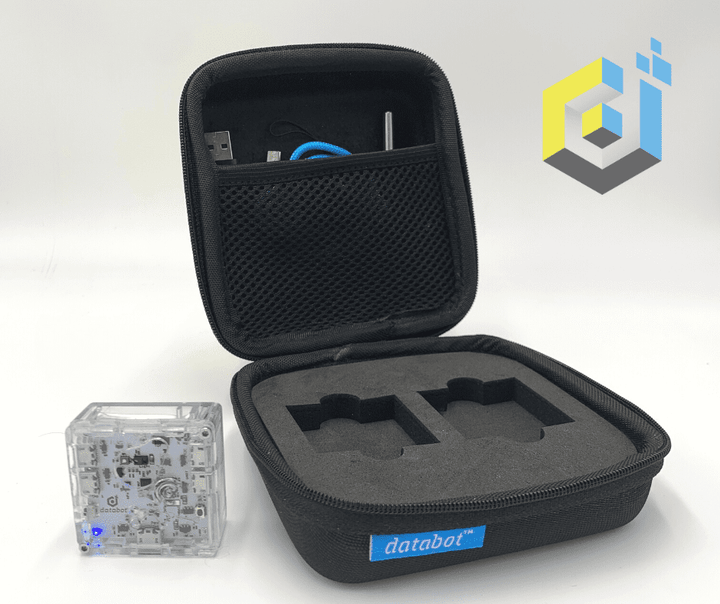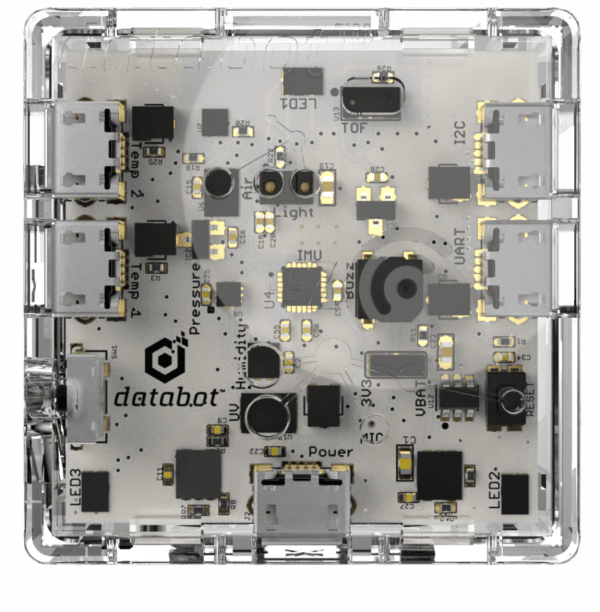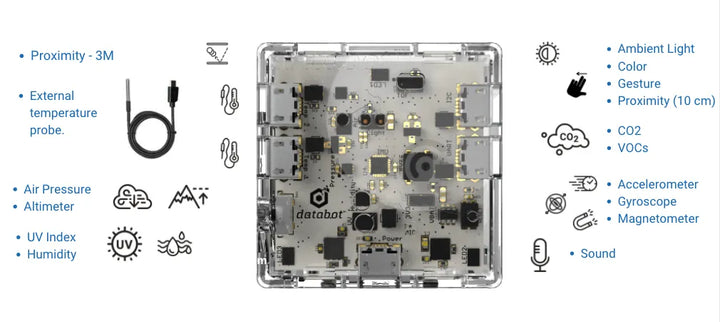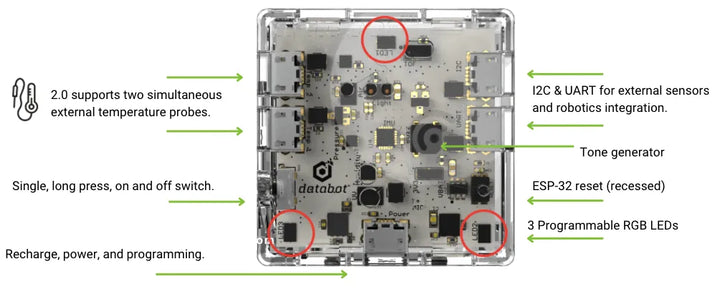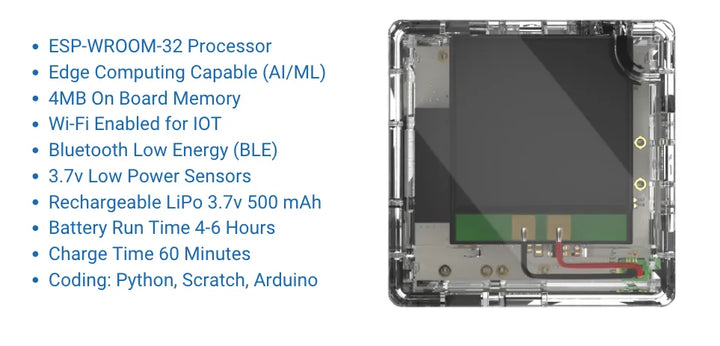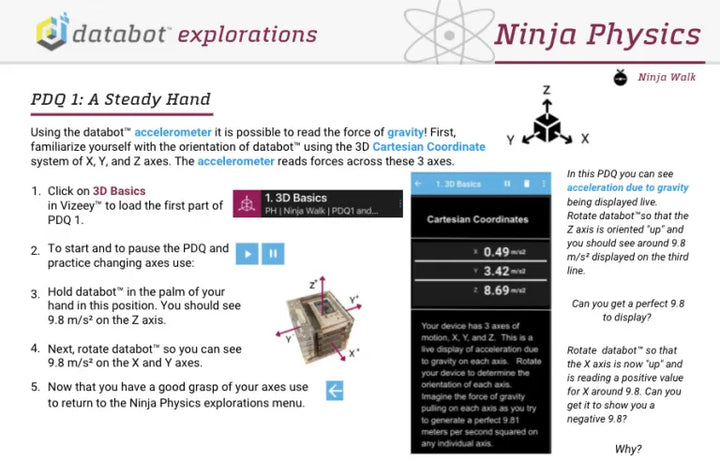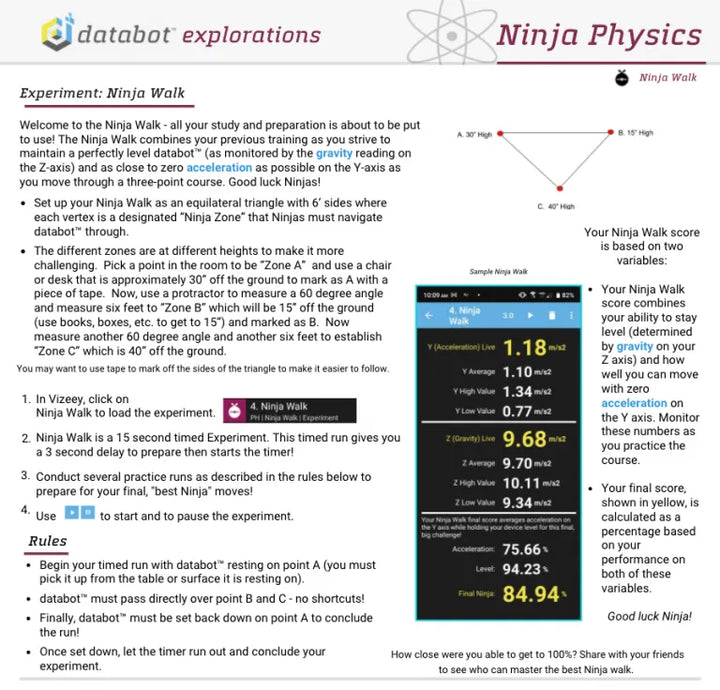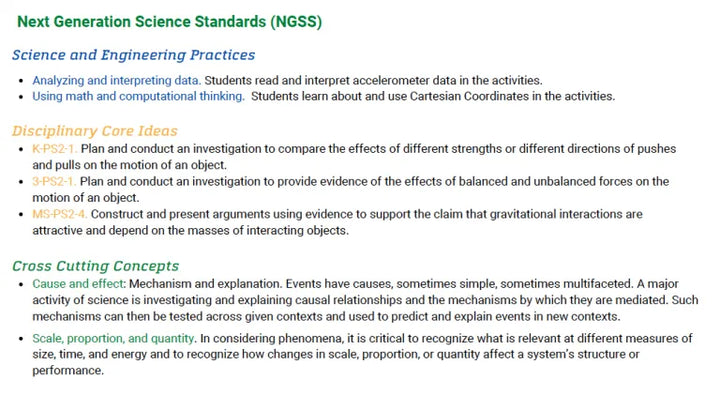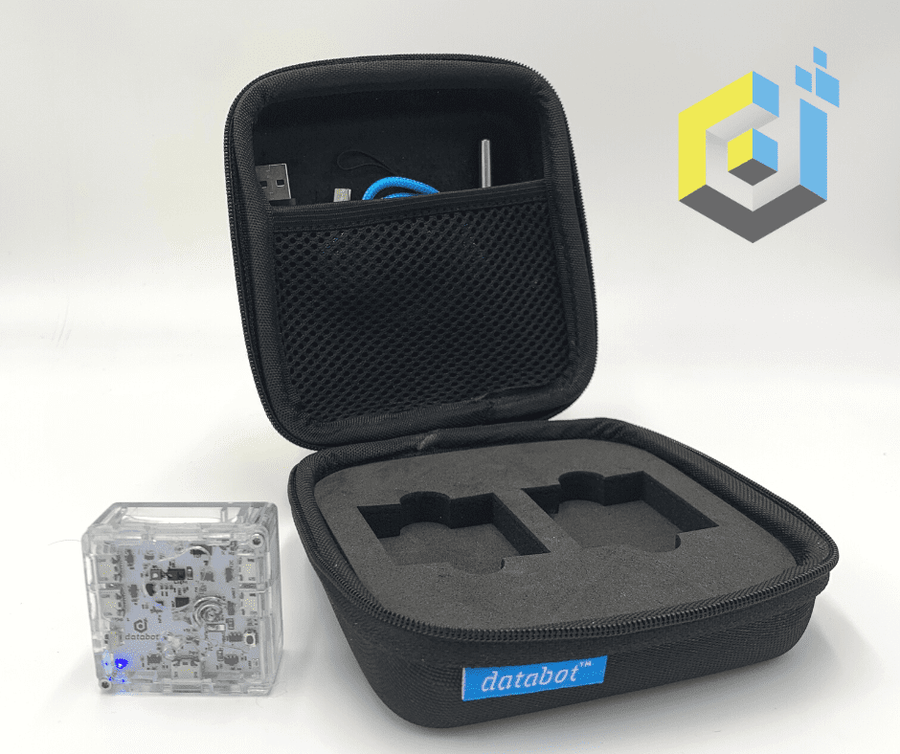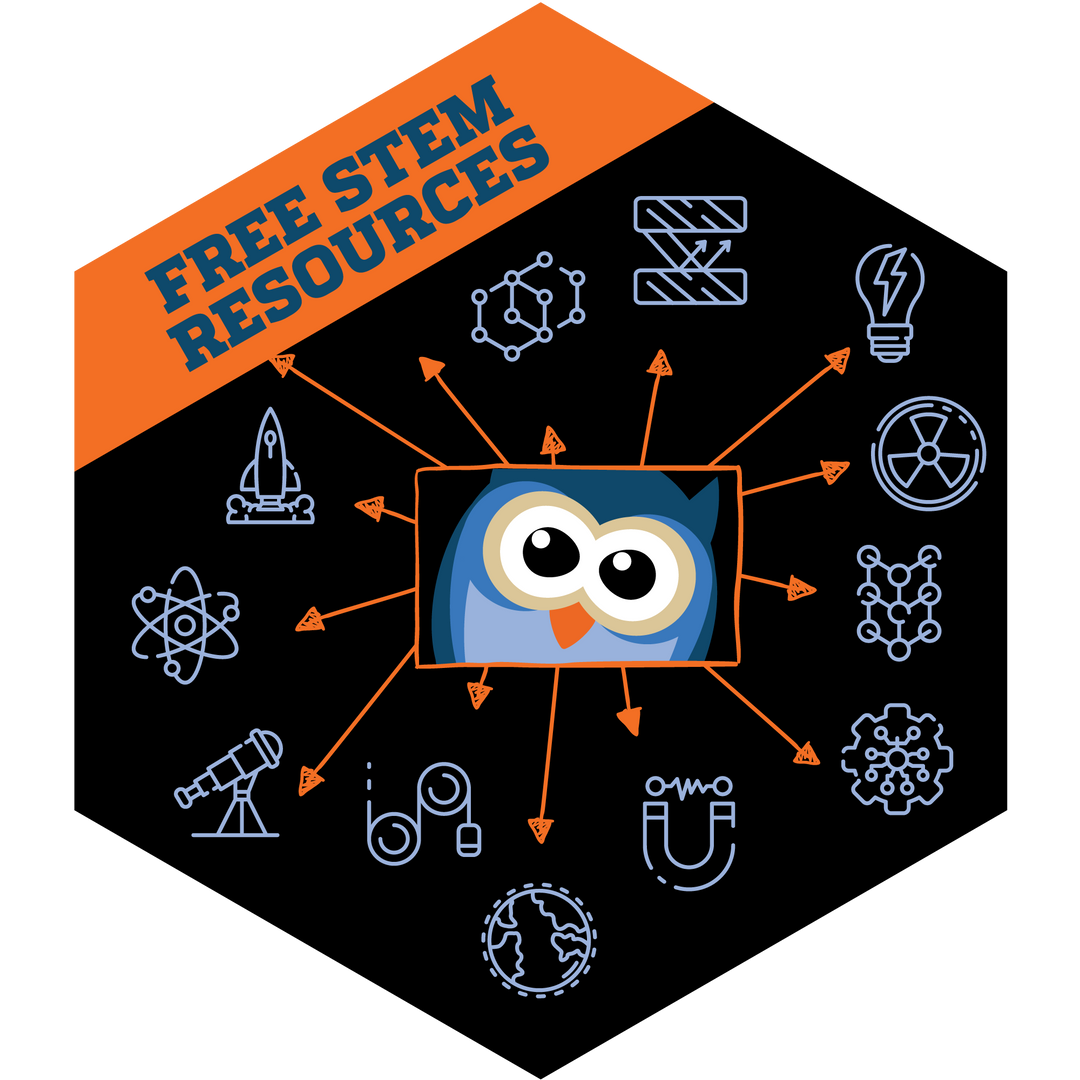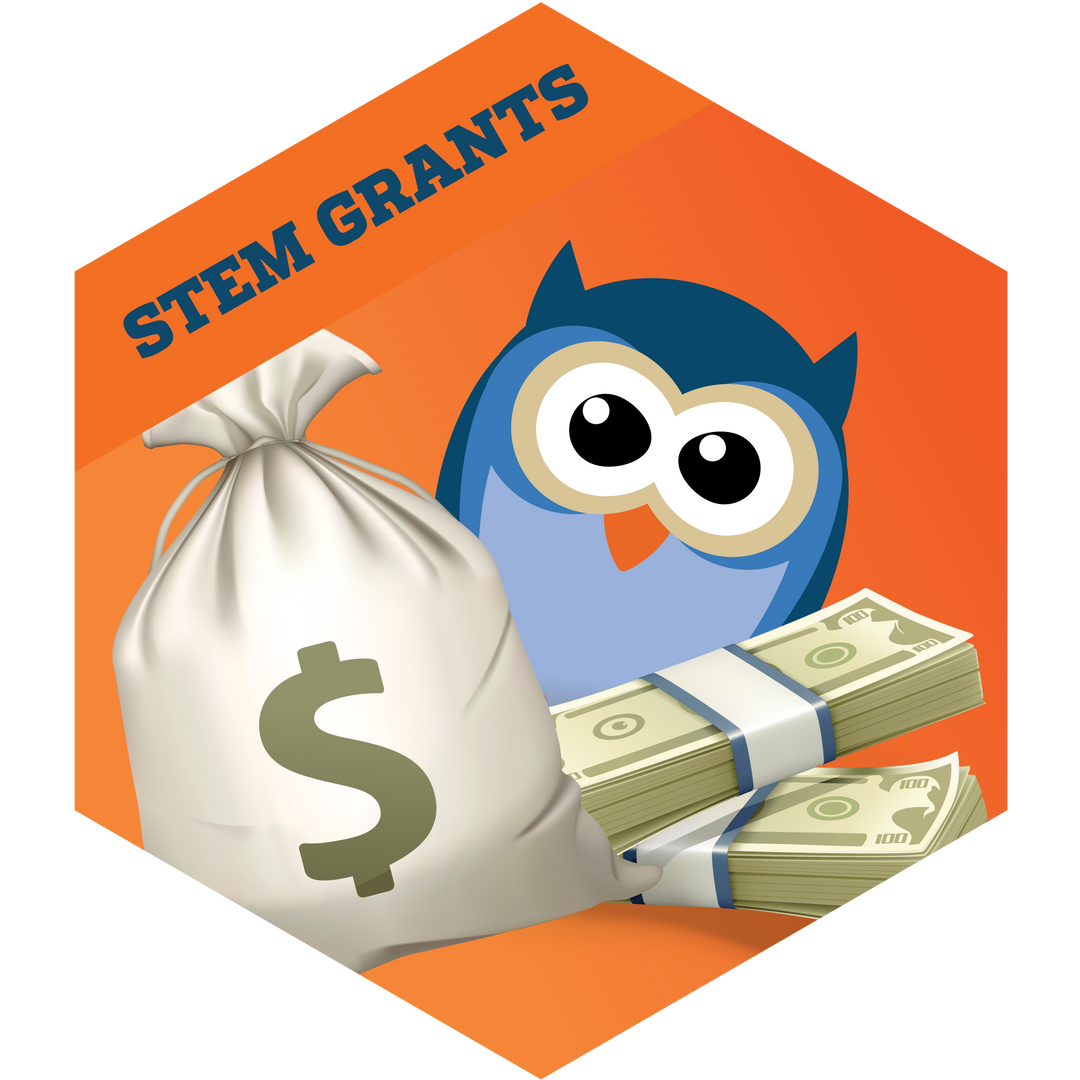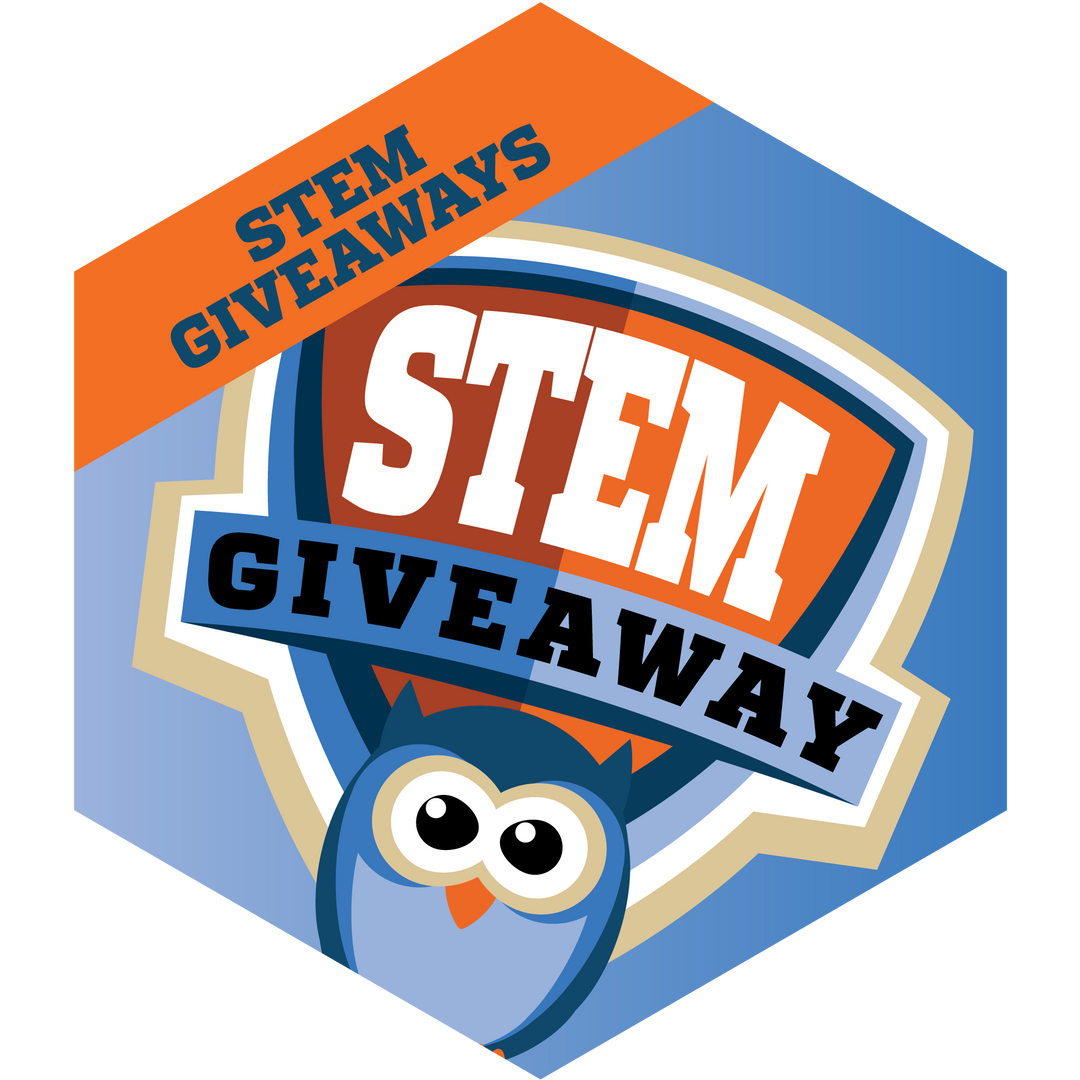databot™ 2.0 - Single
- Grades: 4+
- Number of Students: 2 per databot
- Number of Lessons: 23+
- Contact Hours: N/A
- Additional Resources: Lessons & Activities
Highlights:
About databot 2.0:
databot™2.0 has arrived and is really shaking things up in science education! This tiny device is unstoppable for exploring everything from motion and magnetism to UV light, CO2 levels, and humidity. Never has exploring the scientific data that surrounds us been more affordable, approachable, or fun!
The 16 included sensors offer a variety of data collection capabilities for endless explorations in earth science, physics, life science, chemistry, and the environment! Completely programmable and enabled for artificial intelligence and machine learning projects, databot™ 2.0 also has programmable RGB LEDs and a tone generator, making it a rich resource for physical computing and developing coding skills. Paired with Vizeey™, an incredibly easy-to-use app for smart devices, streaming and exploring all kinds of data starts with the tap of an icon – it’s the easiest way to begin visualizing and exploring real data!
16 Incredible Sensors in One Device!
This tiny package packs a wallop with more power and capabilities than any other multi-sensor device on the planet. Ideal for multi-disciplinary investigations, students need only one databot™, a smart device, and insatiable curiosity to explore the invisible world of scientific data that surrounds us! Unlimited experiments with these tools at your fingertips: UV, Sound, Acceleration, CO2, Gyroscope, Air Pressure, External Temperature probe, Altitude, Magnetism, Humidity, Ambient Light, Color, Gesture, and short and long range Proximity Sensors!
For Grades 4 and Up
Due to its versatility across multiple disciplines and incredible ease-of-use, databot™ is appropriate for students as young as 4th grade for science explorations or STEM programs looking for physical computing attributes to make coding lessons more engaging. Now with drag and drop software support with AI extensions, students as young as 4th grade can begin coding and learning artificial intelligence concepts. High school and technical students can even turn databot into an edge computing device for advanced Machine Learning applications. One device – incredibly easy to use for science, incredibly versatile and powerful for STEM topics. Worried about dropping it? Have no fear – databot™ 2.0 is tough-as-nails yet approachable for students, young and old alike, to handle it and use it for daily explorations.
Settings:
databot™ 2.0 is an incredibly versatile tool and fits everywhere – in-person, hybrid, or remote! Since its debut in 2019 databot™ has been used in nearly every learning setting from home users to CTE programs launching it on weather balloons.
- Science Education: Elementary, Middle School, High School, and in-home learning.
- CTE: Computer Science, Physical Computing, Data Science, AI, Machine Learning
- Engineering: Design Challenges and Integrations with Robotics programs.
- Informal Learning: Summer Camps, After-school programs, Science Centers
Suggested Add-ons:
Curriculum or Lesson Topics:
databot ™ 2.0 Curriculum:
databot's mission is to make interacting with and understanding data and technology a beautiful, fun, and ubiquitous experience that crosses the traditional boundaries of all learning environments. The world is driven by data and we are driven to teach future generations how to use it for good. databot™ creates data powered technology and brilliant learning activities that empower students everywhere to think deeply, explore with passion, and solve our planetary scale challenges. databot™ was created to function as a highly versatile, multi-purpose tool capable of enhancing activities in all the core sciences as well as STEAM topics such as coding and physical computing. Activities around these themes are organized into learning units called databot™ Explorations.
databot Explorations:
databot™ Explorations provide sensor driven experiences that make students comfortable with data – collecting it, seeing it, analyzing it, and understanding it. We need critical thinkers and problem solvers to take on our global challenges and data can unlock the world’s most challenging mysteries. databot™ Explorations are comprised of the following sections designed for ease of use by busy educators.
Introduction & Objectives:
This section includes the Subject and Topic, appropriate Age Range, Time to Execute, Learning Objectives, any Required Materials, Terminology, Preparation, and Curriculum Connections. Browse this introductory section to quickly get a complete picture of the activities and learning objectives associated with the Exploration.
PDQ Activities - Pretty Darn Quick!
Each Exploration includes 2 PDQs, fast and fun activities designed to be executed in 5-15 minutes. When conducted as a complete unit, the two PDQs lay the conceptual groundwork and establish the skills needed for a longer experiment. The concepts and learning objectives of the complete Exploration are reinforced through each activity which involves a variety of hands-on, physical interactions with scientific data. In addition, these fast and fun activities can serve a number of functions such as:
- Icebreakers. For groups of students new to each other in a camp, new classroom, after-school program etc. PDQs can provide short, fun, collaborative experiences that facilitate getting to know one another.
- Concept Enhancements. Quickly bring concepts to life using databot PDQs. Now, when you’re introducing scientific concepts like Ultraviolet radiation or Carbon Dioxide you can inject a fast and fun hands-on demonstration that brings abstract concepts to life.
- Team Building. PDQs are perfect for collaborative learning where students will work together in small groups to devise experiments, gather data, and code clever projects that bring the numbers of science to life.
Experiment:
The experiment is designed to build on the skills and concepts introduced in the PDQs and will be around 30 minutes in length. Together, this sequence of three activities provides a deeper hands-on experience related to the topic. Together, the PDQs and Experiment will total about 50 minutes in length, designed to fit within a standard classroom period. Download a complete curriculum unit that you can conduct entirely with our app, Vizeey™, using the sensors on your smartphone!
Check for Understanding and Extensions:
At the end of each Exploration extension activities are included for further investigation into the topic through challenges and data visualization activities to develop additional data literacy skills in students. Check for understanding questions are provided for entire Exploration that address the core topics addressed.
Teacher Resources and Standards Alignment
Teacher resources include a Lab Guide and Student Handout. The Lab Guide includes educator-specific support materials such as common Misconceptions, Guiding Questions, Answer Key, and Alignments with the NGSS standards. Some Explorations also include additional resource sheets depending on the topic, for example additional background information on some of the math behind an activity.
Standard Alignments:
databot™ curriculum is organized into curriculum units called Explorations. Each Exploration is extensively supported with a Lab Guide that provides additional resources, standards alignments, clearly stated learning objectives, and tools such as common misconceptions and guiding questions to help educators implementing these lessons for the first time.
For science units, alignment with the Next Generation Science Standards is provided. Additionally, some Explorations will include NCTM alignments or other specific correlations to ISTE or other technology standards. Download a complete Exploration here, Ninja Physics, that you can use immediately using our app, Vizeey™, and your smart device – phone or tablet!
Next Generation Science Standards (NGSS):
Science and Engineering Practices:
- Analyzing and interpreting data. Students read and interpret accelerometer data in the activities.
- Using math and computational thinking. Students learn about and use Cartesian Coordinates in the activities.
Disciplinary Core Ideas:
- K-PS2-1. Plan and conduct an investigation to compare the effects of different strengths or different directions of pushes and pulls on the motion of an object.
- 3-PS2-1. Plan and conduct an investigation to provide evidence of the effects of balanced and unbalanced forces on the motion of an object.
- MS-PS2-4. Construct and present arguments using evidence to support the claim that gravitational interactions are attractive and depend on the masses of interacting objects.
Cross Cutting Concepts:
- Cause and effect: Mechanism and explanation. Events have causes, sometimes simple, sometimes multifaceted. A major activity of science is investigating and explaining causal relationships and the mechanisms by which they are mediated. Such mechanisms can then be tested across given contexts and used to predict and explain events in new contexts.
- Scale, proportion, and quantity. In considering phenomena, it is critical to recognize what is relevant at different measures of size, time, and energy and to recognize how changes in scale, proportion, or quantity affect a system's structure or performance.
What’s Included:
- databot™ 2.0
- Protective Storage Case
- Temperature Probe
- Charging Cable
- Lanyard
- Curriculum Library
- Vizeey ™ Smart App Access
Additional Information and Resources:
Technology Requirements/Specifications:
Tech Requirements
For fast and easy science sensor experiments the only technical requirement is to have a smart device (IOS or Android) such as a tablet or smartphone with Bluetooth to connect to databot™. You download databot's™ free app, Vizeey, connect to databot and you’re up and running! For coding or other advanced applications the technical requirements for databot™ will vary depending on your setting and intended use.
Tech Specifications
Sensors:
- Proximity - 3M
- External temperature probe
- Air Pressure
- Altimeter
- UV Index
- Humidity
- Ambient Light
- Color
- Gesture
- Proximity (10cm)
- CO2
- VOCs
- Accelerometer
- Gyroscope
- Magnetometer
- Sound
I/O & Design
- 2.0 supports two simultaneous external temperature probes
- Single, long press, on and off switch
- Recharge, power, and programming
- 12C & UART for external sensors and robotics integration
- Tone generator
- ESP-32 reset (recessed)
- 3 Programmable RGB LEDs
Communications, Processor, and Power
- ESP-WROOM-32 Processor
- Edge Computing Capable (AI/ML)
- 4MB On Board Memory
- Wi-Fi Enabled for IOT
- Bluetooth Low Energy (BLE)
- 3.7v Low Power Sensors
- Rechargeable LiPo 3.7v 500 mAh
- Battery Run Time 4-6 Hours
- Charge Time 60 Minutes
- Coding: Python, Scratch, Arduino


